[Page 3]

Prototypes in 1/72 scale
page 2
page 3
The Bell X-22A was an experimental VTOL/STOL aircraft designed in the nineteen fifties. The US NAVY was interested in a VTOL concept, and Bell responded with the X-22. Later, Airforce and Marine corps were also interested so a "true Tri-service" project emerged. The X-22 had four rotating propellers in ducted fans driven by four turboshaft engines via a series of gearboxes. Two aircraft were built, the first flying March 1966. It had a number of problems and one proto crashed. Test program was stopped in 1974.
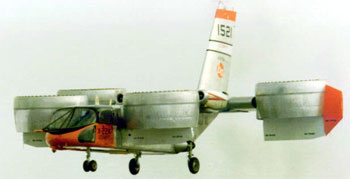
Specifications (X-22A):
* Crew: 2
* Length: 39 ft 6 in (12.04 m)
* Span: 39 ft 3 in (11.97 m)
* Maximum takeoff: 16,755 lb (7,800 kg)
* Powerplant: 4x General Electric YT-58-GE-8D ducted turboshafts, 1,250 hp (932 kW) each
* Maximum speed: 255 mph (408 km/h)
![]()
The 1/72 kit seen here is from ANIGRAND
from HongKong. It is a model with about 30 mostly resin parts.
It can be ordered from the Anigrand
website, I payed US 36,= in mid 2004. (I do not know of any other 1/72
kit).
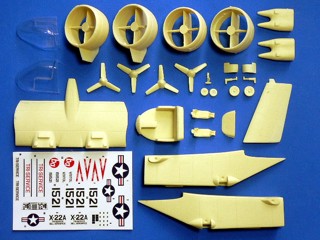
The resin parts are OK, although
the resin parts need cleaning up and some parts are rather tiny and a bit
unclear as they are so small to mould. The resin kit parts were given a
clean up in mild water and the edges and mouldings were sanded and prepared
for assembly. Make sure to use plenty of water as the resin dust is harmful!
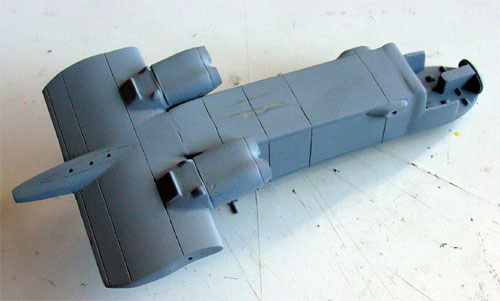
After basic assembly, you will need
some putty at the fuselage joints.
Assembly is otherwise rather straigthforward.
I used superglue for the smaller parts and two-component glue for the fuselage.
The ducted fans take quite some effort to clean up and in some areas I
had to fill very tiny holes in the resin with a drop of superglue and baker's
salt. I used metal rods and drilled holes to get a rotatable strong joint
of the ducts to the fuselage.
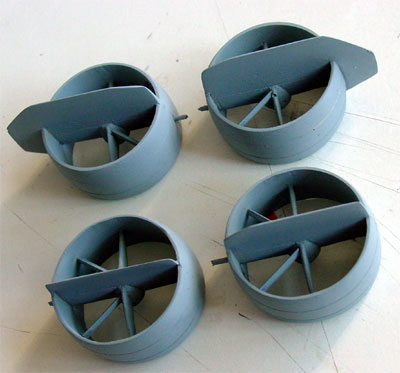
I replaced the undercarriage legs with pieces of metal rod made from paperclips. I also added what I think is a fueldump pipe at the rear of the fuselage. The pitot tube was made of a piece of rod. Otherwise, the kit needed no modifications.
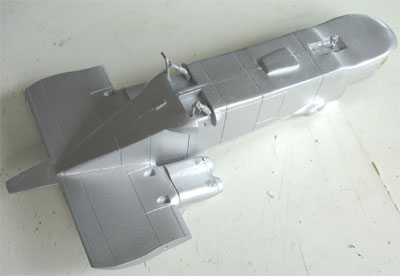
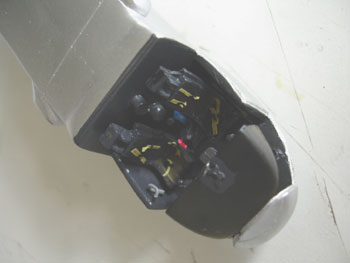
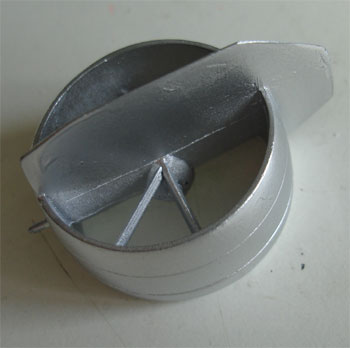
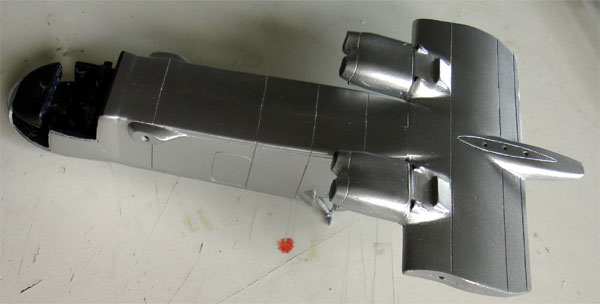
The colour scheme is basically aluminium
with red/orange high visibility flight test markings. When you look at
X-22 pictures, you will some slight variations of these high visibility
markings. The engine pods main sections are white. For the high visibility
panels, I used a mix of 90% gloss red and 10% gloss orange. The cockpit
canopy frames were made with black decal.
For the aluminium I used Alcad II " highly polished " aluminium. It was applied over a acrylic black coating as stated in the Alclad instructions.
The provided decals are OK, but will
need a long time in water before they can be applied.
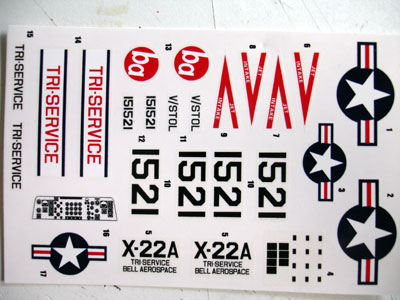
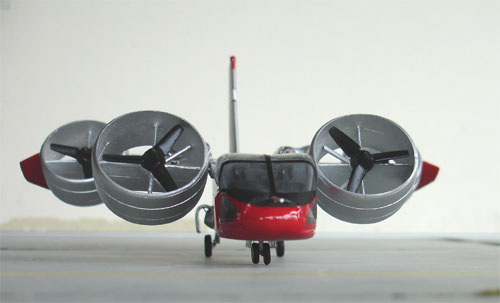
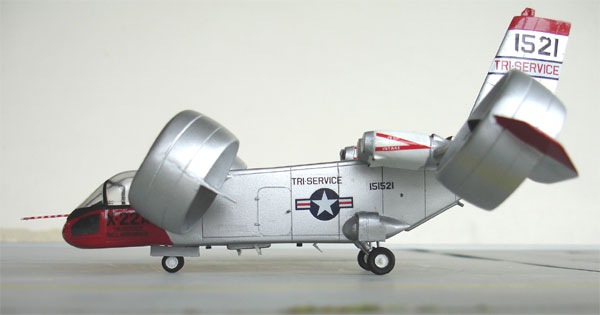

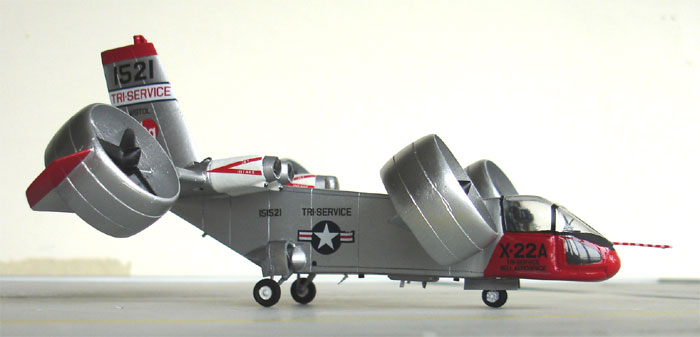
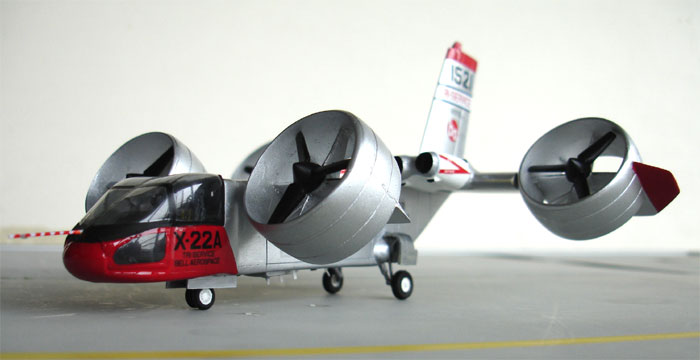
quite a strange design this
is!
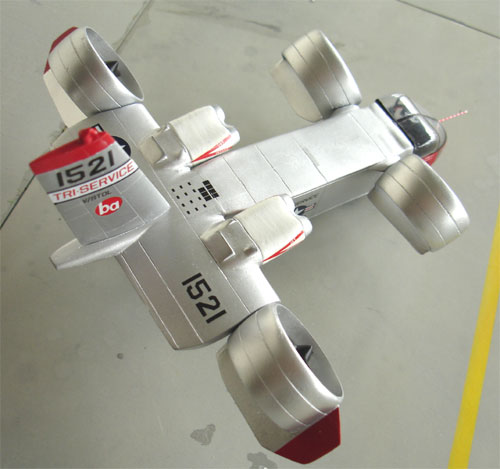
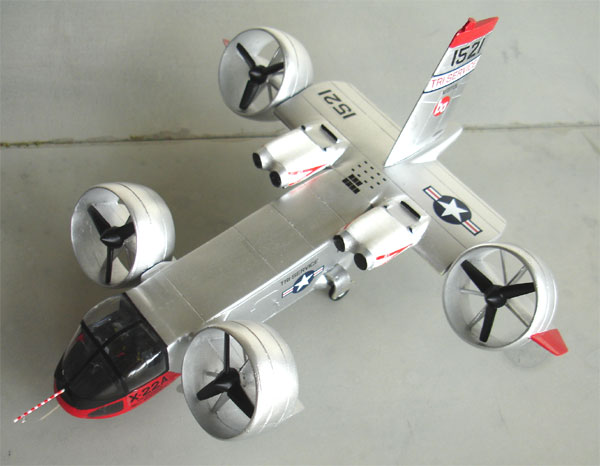
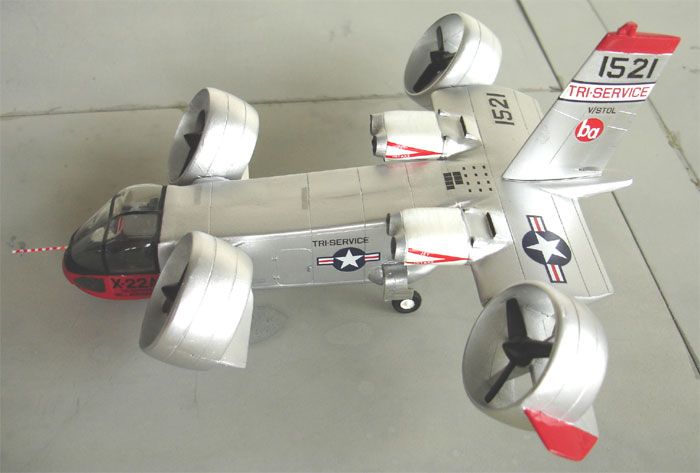
The end-result looks like a real
X-22A. A nice and rare model addition in the prototype collection.
.... in an actual real setting....
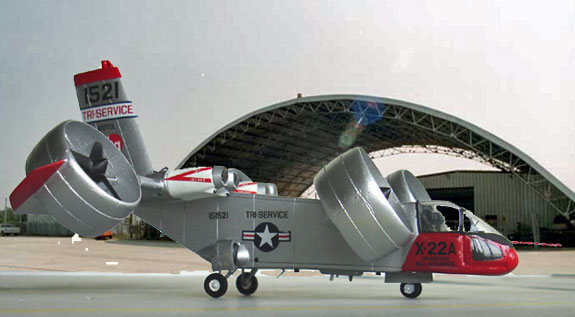
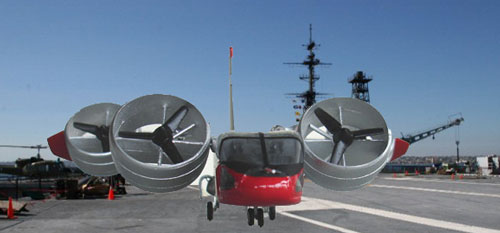
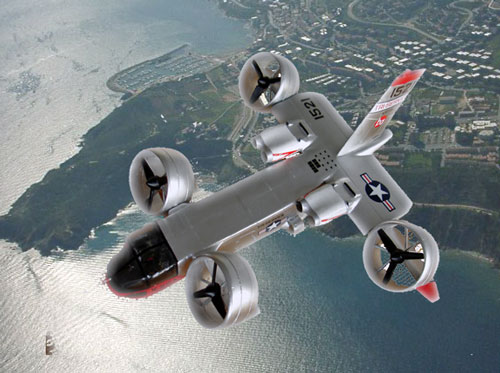
- X-planes, Jay Miller, Aerofax inc., 1995 (revised edition)
- Janes pocket book 12 on research & experimental aircraft.

(c) Copyright Meindert "designer"/ All rights reserved. Your comments are welcomed by webmaster
Updated this page: August 24, 2006